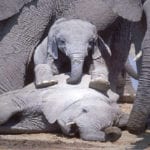 History
History  History
History  Weird Stuff
Weird Stuff 10 Funny Ways That Researchers Overthink Christmas
 Politics
Politics 10 Political Scandals That Sent Crowds Into the Streets
 Weird Stuff
Weird Stuff Ten Bizarre Facts About The Doge Meme
 Our World
Our World 10 Ways Your Christmas Tree Is More Lit Than You Think
 Movies and TV
Movies and TV The 10 Coolest Stars to Set Sail on The Love Boat
 History
History 10 Things You Didn’t Know About the American National Anthem
 Technology
Technology Top 10 Everyday Tech Buzzwords That Hide a Darker Past
 Humans
Humans 10 Everyday Human Behaviors That Are Actually Survival Instincts
 Animals
Animals 10 Animals That Humiliated and Harmed Historical Leaders
 History
History 10 Less Than Jolly Events That Occurred on December 25
 Weird Stuff
Weird Stuff 10 Funny Ways That Researchers Overthink Christmas
 Politics
Politics 10 Political Scandals That Sent Crowds Into the Streets
Who's Behind Listverse?

Jamie Frater
Head Editor
Jamie founded Listverse due to an insatiable desire to share fascinating, obscure, and bizarre facts. He has been a guest speaker on numerous national radio and television stations and is a five time published author.
More About Us Weird Stuff
Weird Stuff Ten Bizarre Facts About The Doge Meme
 Our World
Our World 10 Ways Your Christmas Tree Is More Lit Than You Think
 Movies and TV
Movies and TV The 10 Coolest Stars to Set Sail on The Love Boat
 History
History 10 Things You Didn’t Know About the American National Anthem
 Technology
Technology Top 10 Everyday Tech Buzzwords That Hide a Darker Past
 Humans
Humans 10 Everyday Human Behaviors That Are Actually Survival Instincts
 Animals
Animals 10 Animals That Humiliated and Harmed Historical Leaders
10 Truly Unusual Human Deaths
As mortal beings, death holds a particular fascination for us. It is the ultimate price to pay for one or two seemingly inconsequential decisions you’ve made during the course of your life, and could happen to anyone at any time. Heart attack while brushing your teeth? Sure. Brain aneurysm while perusing the filthiest reaches of the internet? Could happen. But those aren’t really the most interesting ways to leave this world. If you’re not able to get famous from dying, you’re doing it wrong; unlike some of the people coming up.
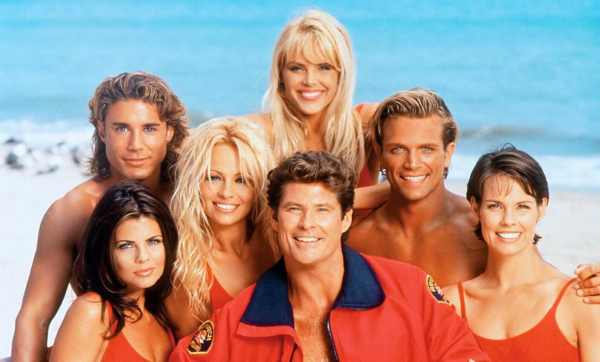
In 1985, the New Orleans Recreation Department held a pool party to celebrate their first summer season of swimming without any drownings. This alone should be alarming to anyone, considering that holding a party simply because no one died on your property this year seems a little unnerving. Regardless, about 100 off-duty lifeguards were present, as well as four active ones—making it one of the safest possible pool parties in existence. Unless, of course, you’re Jerome Moody.
Moody defied the odds and managed—despite the massive number of trained lifeguards in the vicinity—to surreptitiously sink to the bottom of the pool and drown. Disturbingly, the man was not discovered until the end of the party, raising questions about how long his lifeless body was resting just below the feet of the other partygoers.
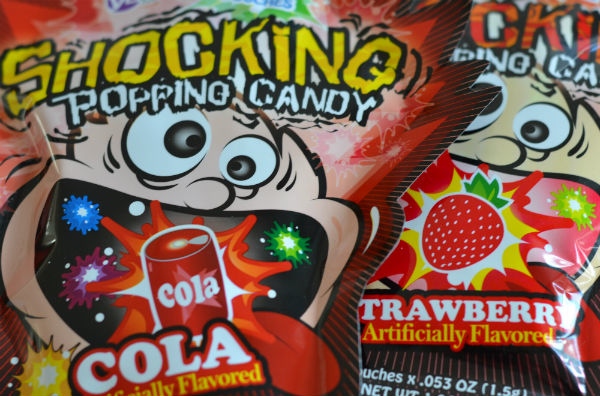
Vladimir Likhonos, a twenty-five year old chemistry student at the Kyiv Polytechnical Institute in Ukraine, had a fondness for dipping his chewing gum in powdered citric acid in order to give it a sour taste. This harmless practice was the catalyst for his death however, as he confused a highly explosive compound for his usual flavor enhancer.
This simple error resulted in a small explosion as soon as the Likhonos’ saliva mixed with the unstable powder. Small, however, is a relative term as the blast was powerful enough to completely remove his jaw, and to cause disfiguring injuries to his face. Unfortunately—despite arriving quickly—the man was unable to be saved by police and paramedics.

Cockfighting is an undeniably brutal sport—specially bred roosters are equipped with blades and pitted against one another gladiator-style until one of the birds becomes incapacitated or dies. The risk for bodily harm typically extends only to the avian competitors. But this was not the case for Jose Luis Ochoa on January 30th, 2011, when he received a cock-inflicted wound to his right calf while attending a cockfighting event in California. For his participation in a cruel and illegal event, Jose paid the ultimate price just two hours after being wounded. Meanwhile, the rooster’s current whereabouts are unreported, but we can surely expect him to be a solid competitor in the next Mortal Kombat Tournament.
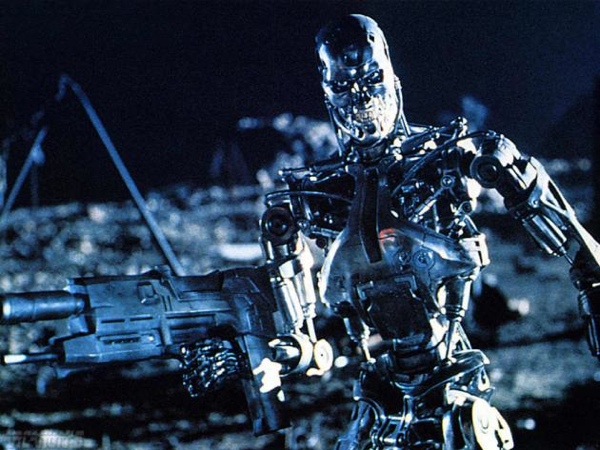
Paranoia abounds when it comes to imagining a future filled with sentient robots. Will they begin producing and maintaining themselves, eliminating the need for human interference? Will they become disgruntled with their slave-hood and decide to dominate us instead? Will our downfall eventually come at the cold, steel hands of the very things we created in order to better our lives?
Well, whatever the answer to those questions may be, for Kenji Urada it was the non-thinking type of robot that posed the biggest threat. While working at a Kawasaki plant in 1981, he was tasked with fixing a malfunctioning robot, which he unfortunately failed to fully deactivate. As he began to make the necessary repairs, the robot suddenly jolted to life, overpowering Urada with its mechanical strength and pushing the helpless man into a grinding machine. This horrid death wasn’t completely fruitless, though—Kenji earned the distinction of being just the second man ever to be killed by a robot.
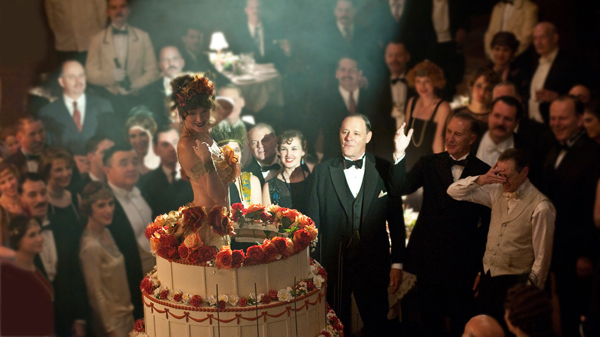
In movies involving a marriage, it’s pretty common to include a scene in which the soon-to-be groom’s friends throw him a stag party before he ties the knot, complete with strippers and a massive cake. And, in some circumstances, those last two things are intrinsically linked, such as in the case of Gina Lalapola, a twenty-three year old stripper from Italy.
For the bachelor party, the groom-to-be’s friends ordered a special surprise: a cake with a stripper inside. As cliché as that is, things took a decidedly bad turn when the stripper failed to emerge from the cake on cue. Naturally, the men assumed she had gotten out of the baked dessert at some point and so went ahead with opening it in order to check. It was their turn to be surprised, however, when they discovered the lifeless body of their hired dancer still nestled patiently inside the cake. Apparently, she had suffocated after waiting over an hour in the sealed wooden confection.
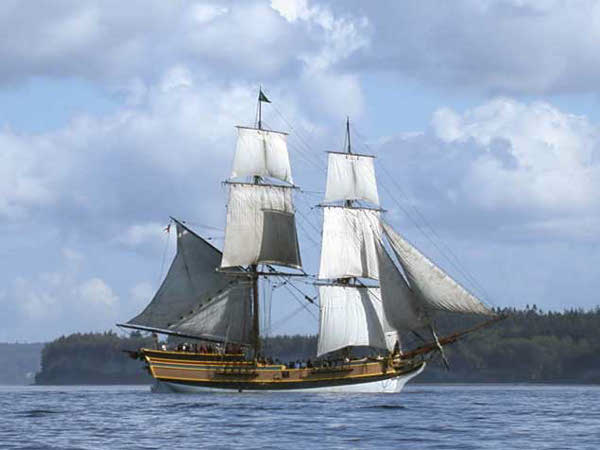
John Kendrick was an American sea captain and trader during the American Revolutionary War of 1775–1783. After this period, in 1794, Kendrick was captain upon the Lady Washington when he found himself just off the coast of Honolulu. It was at this time that the natives were engaged in an inter-island war with another faction and made a deal with a nearby British vessel for assistance in exchange for 400 pigs.
The crew of the British ship, however, were of little help to the Hawaiians as they were preoccupied with counting their newfound pig-fortune. Realizing that the British were busying themselves with another task, the king of the tribe paddled out to ask Kendrick for help. Kendrick accepted and lent a hand in tracking down and killing the opposing king, whereupon he fired a thirteen-gun salute in celebration of the victory.
Upon seeing this, the British Jackal returned the gesture, but failed to realize that one of the cannons was loaded with live grapeshot. Well, either that or the Jackal doesn’t play nicely with other trade ships. The outcome of this blunder took its toll on the Washington, whose very captain, Kendrick, was among those counted dead, making for a very accurate mistake.
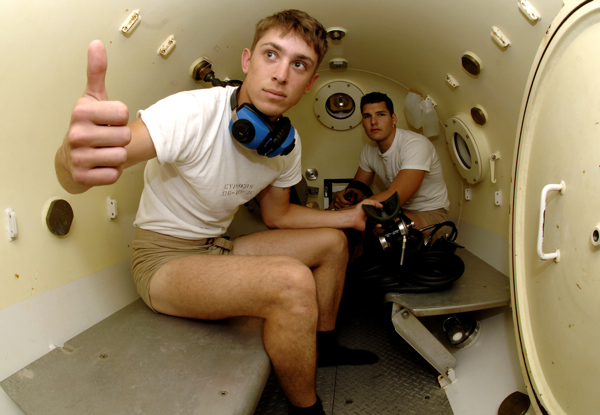
Life on the Byford Dolphin (a semi-submersible drilling rig) isn’t easy. The work is hard and the days are long, a factor which is believed to have played a key role in the rather explosive deaths of five men on November 5th, 1983. During a routine dive preparation, six workers were inside of a compression chamber attached to a diving bell on the rig. If procedures had been correctly followed, it is likely that no incident would have occurred on this day.
Sadly, however, a critical misjudgment in timing led to the explosive decompression of the chamber from nine atmospheres of pressure to just one. This rapid decompression killed all but one of the divers, but one in particular gets the most interest for the manner in which this event affected him: he exploded. The gases in his body instantly expanded, causing the ejection of all of his thoracic and abdominal organs, including even his thoracic spine, and the shedding of all of his limbs. Nearly simultaneously, his remains were sucked through the opening of the door which was only 24 inches (60.96 cm) in diameter. It sounds like a hellish way to go out, but the consolation here is that it was too fast to be anything but painless.
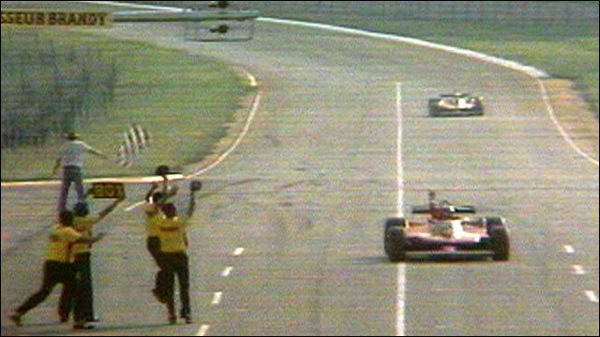
A British racing driver from Wales, Tom Pryce enjoyed an impressive career from 1969 until 1977, when his passion ultimately resulted in his death. It was during the 1977 South African Grand Prix at Kyalami that Renzo Zorzi, Pryce’s teammate, began experiencing trouble with his fuel metering unit, which caused fuel to pump directly onto his engine, igniting it. Zorzi quickly pulled his Formula One car over to the left side of the main straightaway, out of the path of the incoming racers. Though his engine was burning, Zorzi had difficulty disconnecting the oxygen pipe from his helmet, and was unable to exit his car, prompting intervention from two track marshals on the opposite side of the track.
The marshals, Bill and Jansen Van Vuuren each proceeded to cross the track carrying forty pound fire extinguishers, unaware that four cars were coming out of the final turn and onto the main straight. The marshals were fortunate enough to have the lead car swerve to avoid them, but Van Vuuren’s luck ran out when the car directly behind the first, Pryce’s car, was left unable to dodge him in time. The result is that the 1,500 pound vehicle, traveling at 170 mph (270 kmh) instantly tore Vuuren in half and sent his fire extinguisher catapulting into Pryce’s head, which sharply jerked his helmet upward and almost completely decapitated him with the strap.
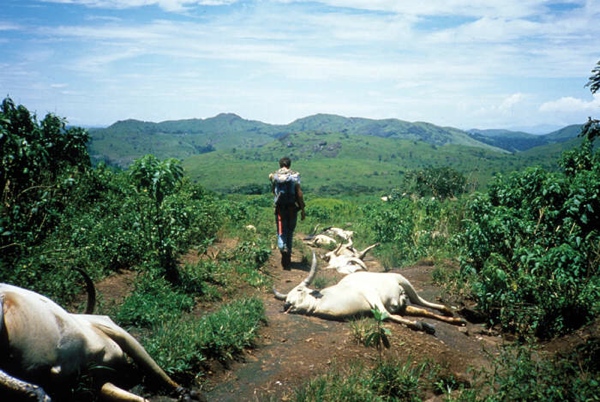
Lake Nyos is a crater lake in Cameroon and the host to a pocket of magma that is constantly seeping carbon dioxide into it, resulting in the water changing into carbonic acid. That, however, is not the worst the lake is capable of. On August 21st, 1986, farmers living in the vicinity of the lake heard a strange rumbling sound accompanied by a frothy spray that shot hundreds of feet from the lake’s surface. Afterward, a cloud began to amass on top of the water, quickly growing to about 328 feet (100 meters) in height. In trying to investigate the noise, people who came into contact with the cloud fell readily unconscious, leaving them unable to warn others about the impending disaster.
The heavier-than-air cloud soon settled into a valley, which served to channel it to other settlements. The people in these areas now began to fall unconscious where they were standing. After just a few breaths, many succumbed to the suffocating nature of the fog before it was carried away by the wind, up to 15.5 miles (25 km) from the initially hit villages. When all was said and done, 1,700 people and 3,500 heads of livestock were killed by the noxious cloud, earning it Guinness’ title for World’s Deadliest Lake in 2008.
Oh, and as for the cause of the disaster? A simple rockslide from within the lake is thought to have triggered a massive release of carbon dioxide. It is expected to happen again, too, but through degassing, scientists hope to control the potential damage.
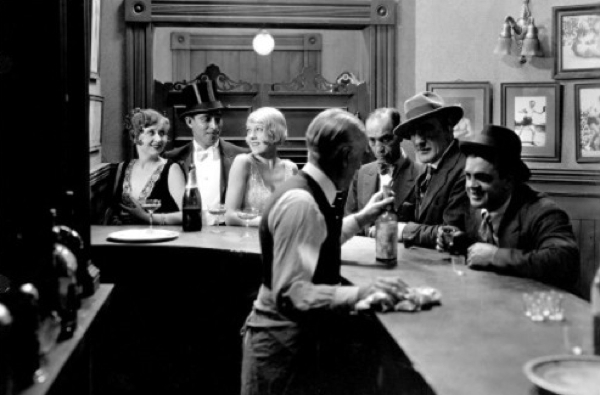
Michael Malloy was a homeless alcoholic who lived in New York City during the 1920s–1930s. He had no known family and nothing would be thought of his sudden demise, leading five men to come up with a cunning plan. The men, dubbed The Murder Trust conspired to take out a life insurance policy on Malloy. They then planned to kill him in order to collect the money. Their method of murder was inspired by Malloy’s alcoholism: let him drink himself to death.
One of the involved men owned a speakeasy, so he gave Michael unlimited credit to drink to his heart’s desire, hoping he would quickly die of his indulgences. But Malloy continued to pound drinks back for the entire working day, every day. Noticing that Malloy hadn’t yet succumbed to his own alcoholism, the Trust began to add secret ingredients to his beverages. First, they added antifreeze, which Malloy didn’t even notice. Next they tried turpentine, horse liniment, and rat poison, all of which failed to affect Malloy.
Deciding on another final solution for their pesky problem, they fed Michael oysters soaked in methanol. Then came sandwiches full of spoiled sardines and rat poison, with just a hint of carpet tacks. After that failed miserably, the Trust threw creativity out the window and simply waited for Malloy to pass out, then dragged his unconscious body into the -14 °F (-26 °C) night and tossed him in a snow bank. They then dumped 5 gallons (19 liters) of snow on his bare chest and left him to die.
Certain that Malloy was dead, the Trust were astonished when he strolled in the next morning, looking no worse for wear. At this point the Trust was running out of patience and ideas, so one member bit the bullet and ran Malloy over with his taxi, which was traveling at about 45 mph (72 kmh). This put him in the hospital with broken bones for three weeks, during which time the Trust attempted to collect the insurance money on him, but failed.
Michael eventually reappeared in the bar for his routine drink, so the Trust initiated their last ditch effort: they allowed him to pass out again, dragged him to the room of one of the Trust members, then inserted a hose in his mouth that was connected to a gas jet, killing Michael within minutes. For their trouble, they earned about $61,000 by today’s standards and a trip to the electric chair for all but one of the gang after they were unable to keep quiet and started talking about “Mike the Durable” around other speakeasies. Obviously they never read Top 10 Tips to Commit the Perfect Crime.




